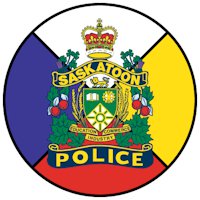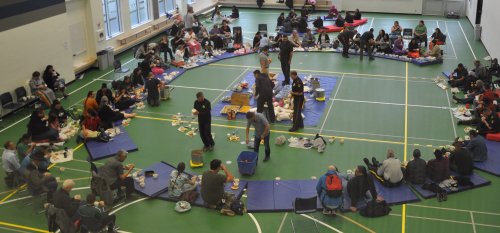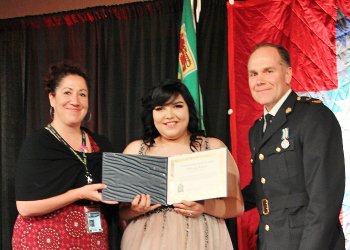Indigenous Relations

The Saskatoon Police Service continues to build bridges and strengthen relationships with Indigenous Communities. This is important to SPS, not only because Indigenous people represent a large percentage of the community we serve, but making those connections is also a fundamental step towards reconciliation.
In December of 2023, in partnership with the Office of the Treaty Commissioner the SPS created a action plan to advance the journey towards Truth, Reconciliation and Treaty Implementation. The plan groups numerous recommendations into six organizational areas of focus, and identifies specific action items, timelines, organizational champions, and indicators for success.
Action Plan towards Truth, Reconciliation and Treaty Implementation
The Chief’s Advisory Committee is made up of local Elders, cultural advisors, kokums & mushoms, the Chief of Police as well as members of the Executive Team and Cultural Resource Unit. The committee meets four times throughout the year, coinciding with the beginning of every new season. Its goal is to connect and advise the Police Service on current issues relating to Indigenous people and police relations within our community. Learn more about the Chief’s Advisory Committee
The Saskatoon Police Service’s Indigenous Relations Consultant plays a key role in connecting Police with the Indigenous communities. They help build partnerships and maintain positive relationships with external Indigenous organizations, community groups, outside police agencies and government departments. Through these relationships, the consultant gathers public input on Indigenous issues and initiatives relating to Police. Learn more about the Indigenous Relations Consultant

Elders Teachings have become a regular occurrence at the Saskatoon Police Service. Organizing these teachings to educate SPS sworn and civilian members, as well as members of the community, is one of the many roles of the Indigenous Relations Consultant. Elders share teachings on many topics such as protocols, traditional medicines and ceremonies, spirituality and reconciliation. There are always opportunities to ask questions and create connections with the Elders during these teachings, which have been offered in relation to the Truth and Reconciliation Commission Call to Action #57:
Professional Development and Training for Public Servants
We call upon federal, provincial, territorial, and municipal governments to provide education to public servants on the history of Aboriginal peoples, including the history and legacy of residential schools, the United Nations Declaration on the Rights of Indigenous Peoples, Treaties and Aboriginal rights, Indigenous law, and Aboriginal–Crown relations. This will require skills-based training in intercultural competency, conflict resolution, human rights, and anti-racism.

Every June, SPS awards two grade 12 students with the Community Justice Award at the Saskatoon Indian and Metis’ Friendship Centre Graduation Gala. The $750 awards honour Indigenous students who are community-minded, dedicated to their studies and interested in a career in Policing or Criminal Justice.
In May of 2017 a monument dedicated to Missing and Murdered Indigenous Women and Girls was officially unveiled on the front steps of Police Headquarters. The monument was made possible through a collaboration with the Saskatoon Tribal Council, the Province of Saskatchewan, and the SPS.
"The Saskatoon Police Service is honoured to be the home for the monument to missing and murdered Indigenous women and girls," said former Police Chief Clive Weighill. "It is our hope that the monument represents not only a place of reflection and peace, but also represents the strong partnerships our Service has with the Saskatoon Tribal Council, the families of victims of violence, the province of Saskatchewan and the City of Saskatoon."
"The Saskatoon Tribal Council has been working with the Saskatoon Police Service, the City of Saskatoon and the Province since 2015 to acknowledge the tremendous importance of focusing on our murdered and missing Indigenous women and girls," said Tribal Chief Felix Thomas. "This monument exemplifies the serious impact even one Indigenous murdered or missing woman or girl has on our community, not just our First Nations, but everyone the city, the province, the country - this is a problem that affects us all."
Created by artist Lionel Peyachew, the life-sized bronze sculpture depicts a woman named Wicanhpi Duta Win or Red Star Woman, a fancy dancer with her shawl as her wings. The monument is a gathering place for marches, ceremonies and a place to pray or reflect.
